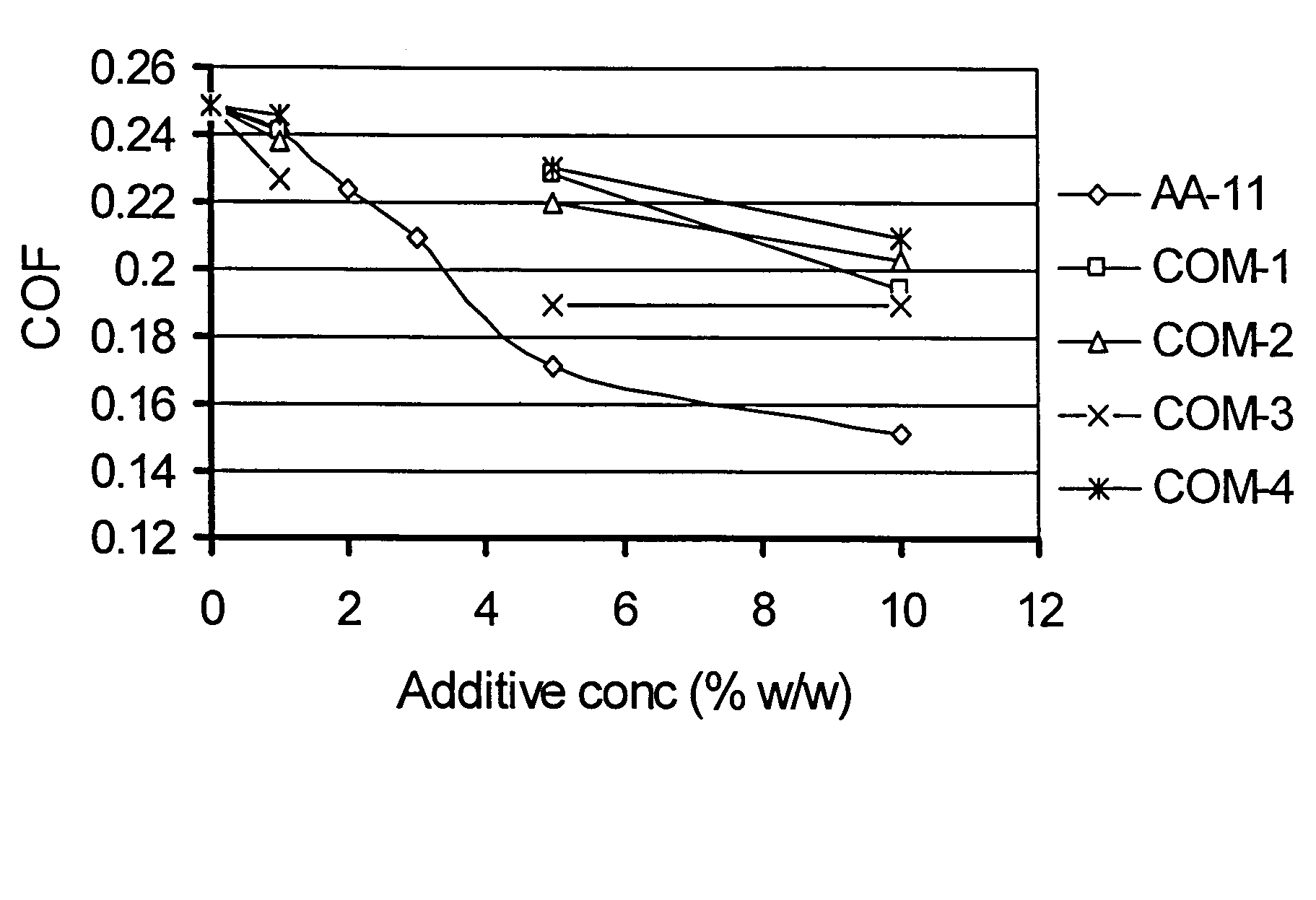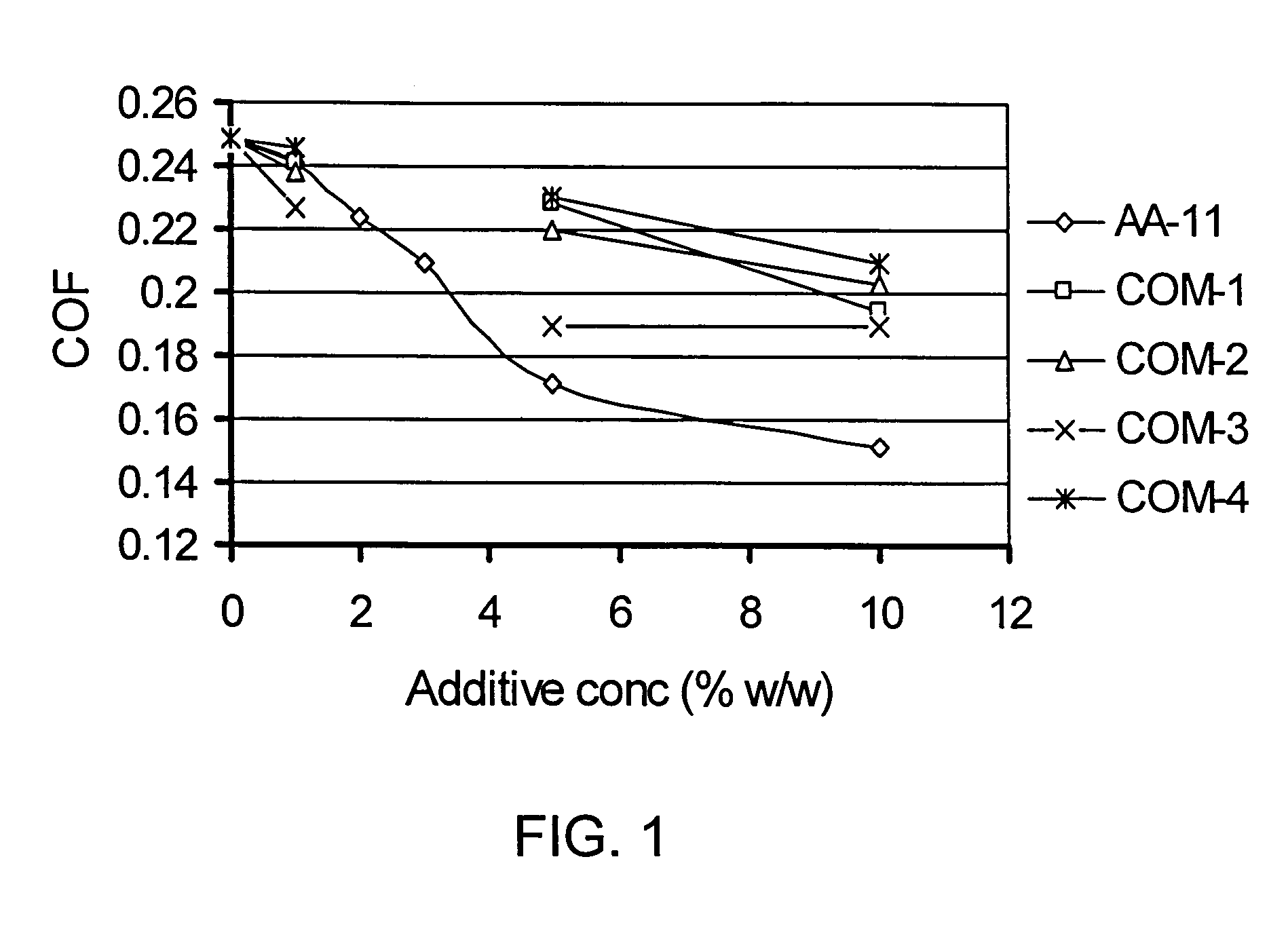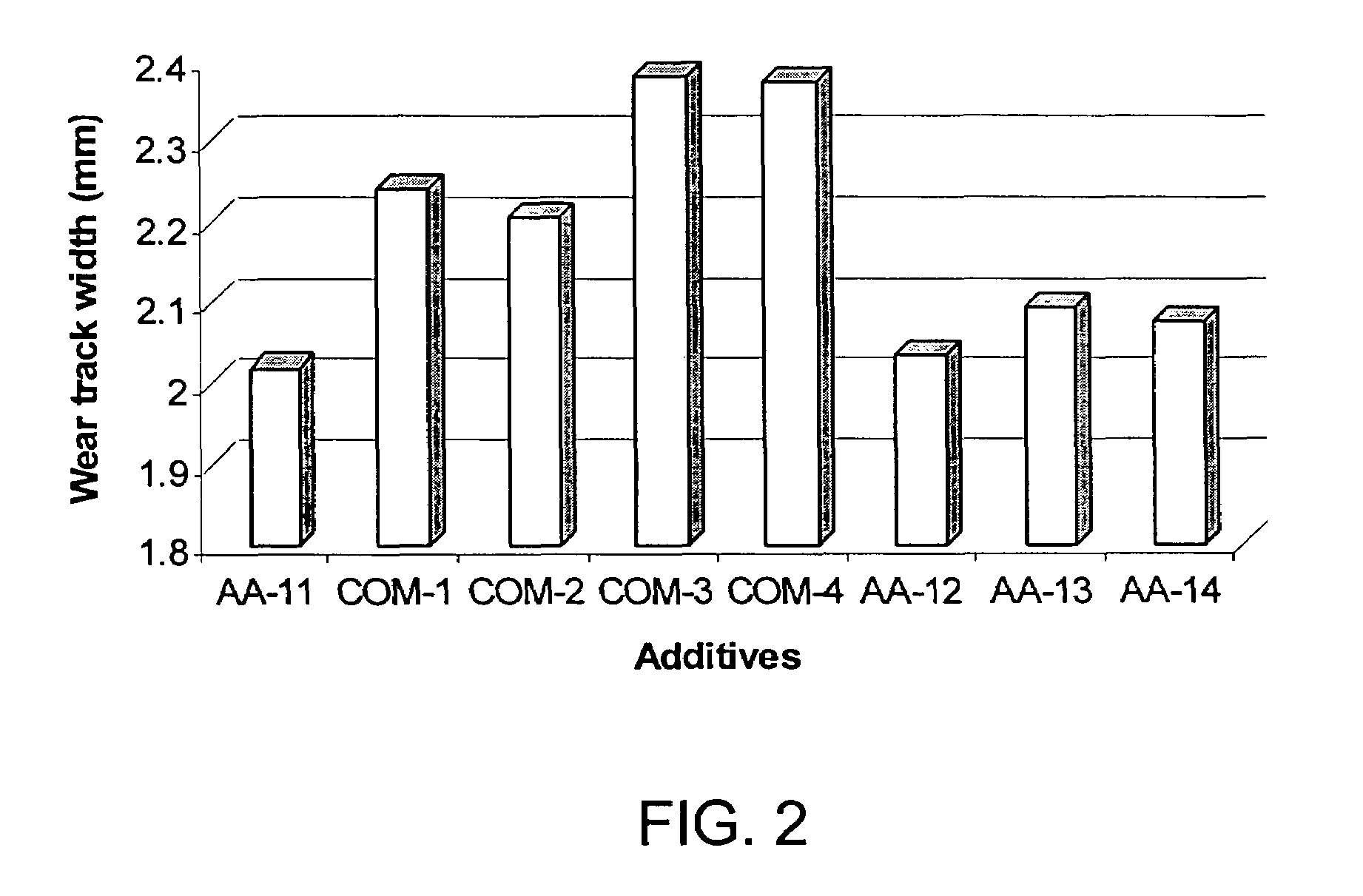Poly(hydroxy thioether) vegetable oil derivatives useful as lubricant additives
a vegetable oil and derivative technology, applied in the preparation of carboxylic compounds, fatty-oils/fats, organic chemistry, etc., can solve the problems of increasing the difficulty of safe and easy disposal, the use of vegetable oil in its natural form as an industrial base fluid or as an additive, and the inability to meet the requirements of lubricant requirements, so as to reduce the demand for petroleum resources and expand the market for agricultural commodities
- Summary
- Abstract
- Description
- Claims
- Application Information
AI Technical Summary
Benefits of technology
Problems solved by technology
Method used
Image
Examples
example 1
Synthesis of Polyhydroxy Thio-Ether Derivative of Soybean Oil from Epoxidized Soybean Oil and 1-Butane Thiol.
[0041]Epoxidized soybean oil (ESBO) was obtained with a purity level of 98% from Elf Atochem (Philadelphia, Pa.), and was used without any further purification. Perchloric acid (HClO4, 70%, ACS Reagent), methylene chloride, sodium bicarbonate, anhydrous magnesium sulfate from Fisher Scientific (Springfield, N.J.) and 1-butane thiol from Aldrich Chemicals (Milwaukee, Wis.) were used as obtained.
[0042]The reaction was carried out with a mixture of 25 gm ESBO and 10 ml 1-butane thiol dissolved in 400 ml methylene chloride, in a three-neck 1000 ml round bottom flask under dry nitrogen gas atmosphere (See Reaction Scheme I, supra). Perchloric acid (70 drops) was added drop-wise to the reaction mixture that was constantly agitated by a magnetic stirrer. Thereafter, heat was increased to the refluxing temperature of 45° C. and continued for 4 hours. After the reaction was complete, ...
examples 2-5
Tribochemical Evaluation
Friction Measurement Using Ball-on-Disk Configuration.
[0046]The 1-butane thiol-ether soybean oil derivative prepared in Example 1, hereafter referred to as “AA-11” was evaluated using a ball-on-disk configuration on a Falex® friction and wear test apparatus (Model Multi-Specimen, Falex® Corporation, Sugar Grove, Ill.). The test zone was a shaft-supported ball moving on a stationary disk (point contact) with a specified speed. The ball was held by the shaft of the upper specimen holder to make a point contact radius of 11.9 mm on the disk. The disk was attached on the bottom specimen holder and enclosed in a fluid tight cup. The resistance to the motion of the ball (i.e. friction force) was measured by a load cell connected to the stationary disk. The coefficient of friction (COF) is obtained by dividing the friction force by the normal force pressing the ball against the disk. The balls (52100 steel, 12.7 mm diameter, 64-66 Rc hardness and extreme polish) and...
example 2
First Ball-on-Disk, Coefficient of Friction Evaluation
[0051]Coefficient of friction properties of AA-11 in toluene solution compared with four commercial additive packages (multi-component additives) COM-1 through COM-4 were evaluated at two different concentrations. The duration of friction test was 15 min at a sliding speed of 6.22 mm / sec (5 rpm) and normal load of 181.44 Kg (400 lb) at room temperature. The temperature of specimen and test fluid was 25±2° C., which increased by 2-3° C. at the end of the 15 min test period. Friction and other data were recorded until the set time elapsed. A duplicate test was conducted with the same test fluid and new set of ball and disk. Data reported are average of the two tests with ±5% mean standard deviation.
[0052]FIG. 1 shows that COF sharply decreased with increasing additive concentration in base fluid (in this case toluene) and levels off at higher concentration. The rate of decrease in COF (as observed from the slope for different addit...
PUM
| Property | Measurement | Unit |
|---|---|---|
| temperatures | aaaaa | aaaaa |
| temperature | aaaaa | aaaaa |
| contact radius | aaaaa | aaaaa |
Abstract
Description
Claims
Application Information
 Login to View More
Login to View More - R&D
- Intellectual Property
- Life Sciences
- Materials
- Tech Scout
- Unparalleled Data Quality
- Higher Quality Content
- 60% Fewer Hallucinations
Browse by: Latest US Patents, China's latest patents, Technical Efficacy Thesaurus, Application Domain, Technology Topic, Popular Technical Reports.
© 2025 PatSnap. All rights reserved.Legal|Privacy policy|Modern Slavery Act Transparency Statement|Sitemap|About US| Contact US: help@patsnap.com



